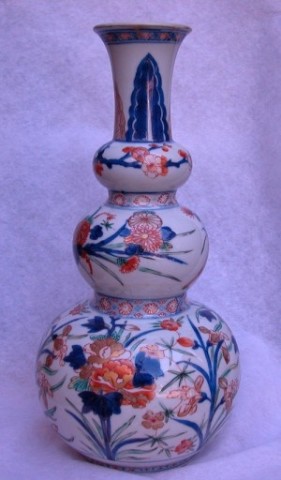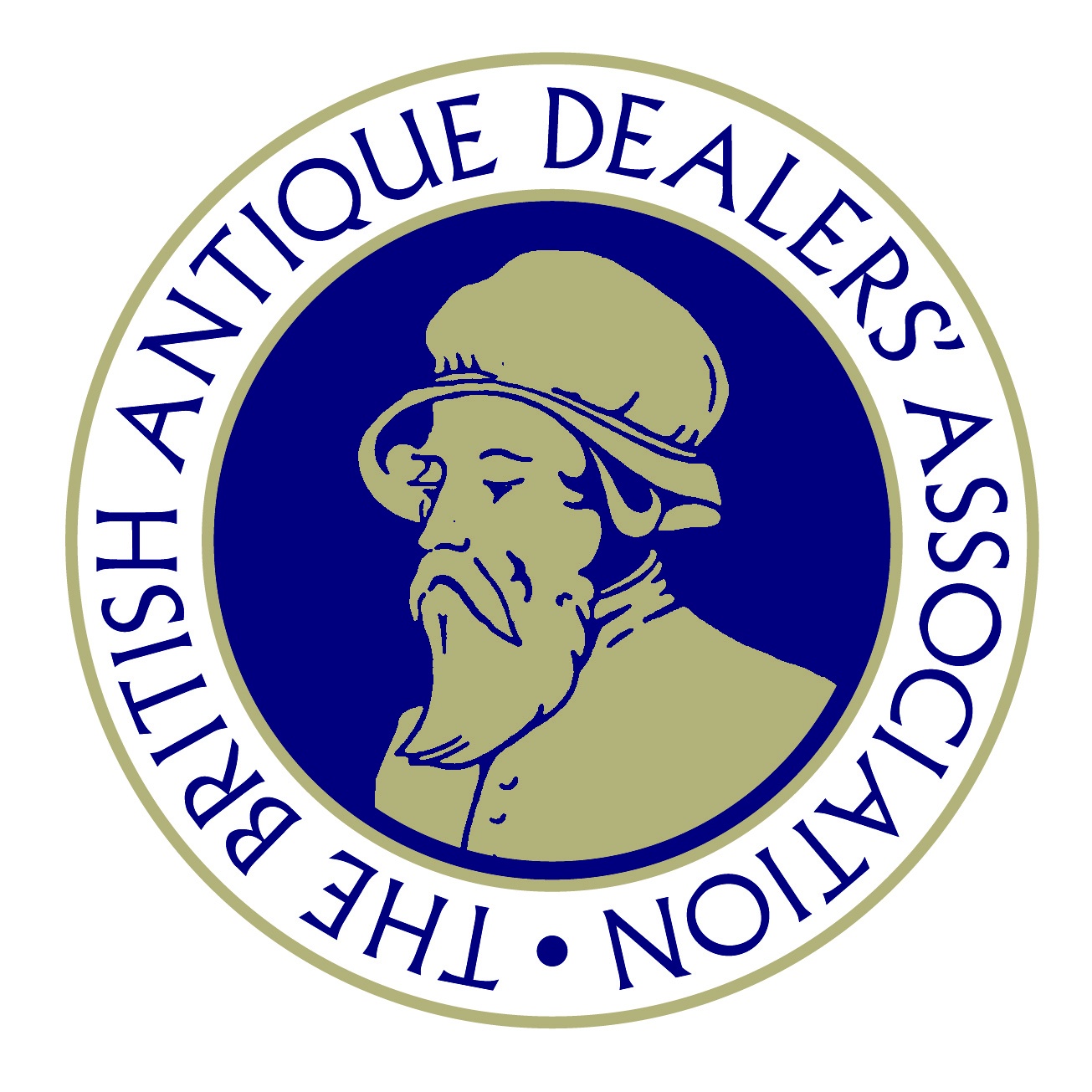Of triple gourd shape with slightly flaring trumpet mouth neck, painted in the style of Japanese Imari with brilliant iron-red and green overglaze enamels, underglaze blue and highlighted in gold, the lower gourd painted with alternating large iris and peony issuing from the foot of the vase and growing on dark blue upright stems with thin green leaves, some of the green leaves characteristically turning yellow at the tips, stretching across the middle gourd finely detailed bouquets of chrysanthemum, the top gourd with a continuous blue branch of flowering and budding prunus, the flaring neck with large stiff plantain leaves in alternating iron-red and blue enamels high-lighted in gold, all separated by bands of trellis-work each enclosing a stylised flower-head, the rim with a band of gold which has slightly run in places, and around the foot a band of honeycomb pattern, the base glazed.
Literature
For an almost identical example see full page illustration in Chinese Ceramics in the Collection of the Rijksmuseum, Christiaan J.A. Jorg in collaboration with Jan van Campen, Amsterdam, published by Phillip Wilson and the Rijksmuseum Amsterdam, London and Amsterdam, 1997, pl 224, p 201, this example was bequest of the widow of J.T. Royer to King William I, 1814, Royal Cabinet of Curiosities and transferred to the Rijksmuseum in 1883, the museum has two more identical pieces. With regards to the decoration and shape Jorg writes; 'The colour scheme copies the rich Japanese Imari which included green and other enamels. The decoration is well done, betraying its Chinese origin only in details such as the way the flowers are drawn and the colour of the blue. The shape, however, is traditionally Chinese. Reichel illustrates a related vase from the Johanneum collection in Dresden.' Another vase of the same shape but in famille verte enamels is illustrated on p. 165, pl. 180, where Jorg notes that; 'In Dutch this shape is traditionally called knobblefles, 'bulb bottles'. Such bottles or vases were much in demand, their complicated form being well suited for decorative purposes in accordance with the trend set by the designs of Daniel Marot. Earlier on p. 135, Jorg writes; 'Daniel Marot (1661-1752), the French Huguenot architect and designer who worked for the Dutch court.? For an example of a pair of triple gourd vases with similar decoration but larger see Eva Strober, La Maladie de porcelain ' East Asian Porcelain from the Collection of Augustus the Strong, Edition Leipzig, Berlin, 2001, p. 88 ? 89, pl. 37, where she notes; 'The large vases in the shape of a double gourd with three bulges are unlike simple gourd forms examples of a rarer type. Bottle gourds are regarded as bringing happiness in China because as the vessel of the elixir of life they are the attribute of the Daoist Immortal Li Tieguai. It has been shown that the gourd form was used as a vessel form as early as the Tang dynasty (618-906) but was particularly popular in the Ming dynasty (1368-1644) and the Qing dynasty (1644-1911).' She also notes; 'Comparable vases are the double gourd vase of roughly the same height of Bernheimer Munchen, the much smaller double gourd vases in the Victoria & Albert Museum in London, the Rijksmuseum in Amsterdam, and the Museo Duca di Martina in Naples.' The example in the Victoria & Albert Museum of this type of vase and decoration is illustrated in their catalogue edited by Craig Clunas, Chinese Export Art and Design, Victoria and Albert Museum, London, 1987 and is also illustrated in Porcelain for Palaces 'The Fashion for Japan in Europe 1650 ? 1750, John Ayers, Oliver Impey, J.V.G. Mallet, Oriental Ceramic Society, 1990, Philip Wilson Publishers Limited, p. 234, pl. 253 in the chapter 'Chinese Porcelain in the Japanese Style'.

